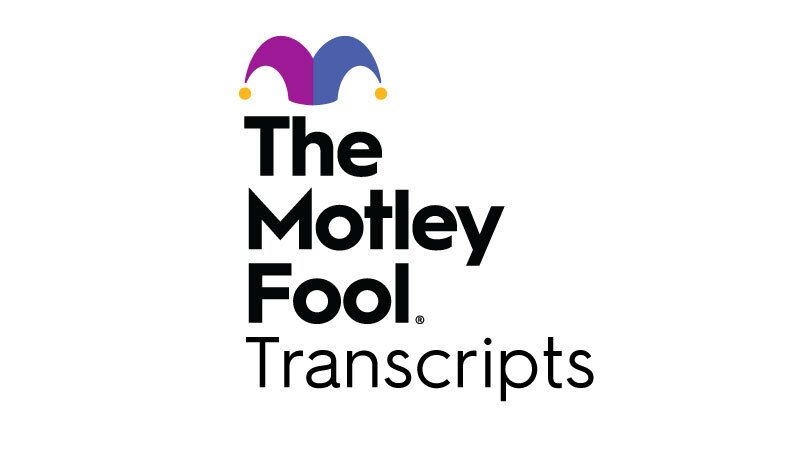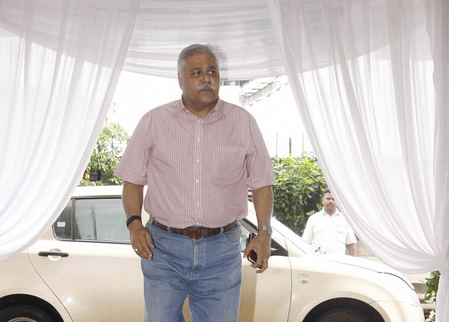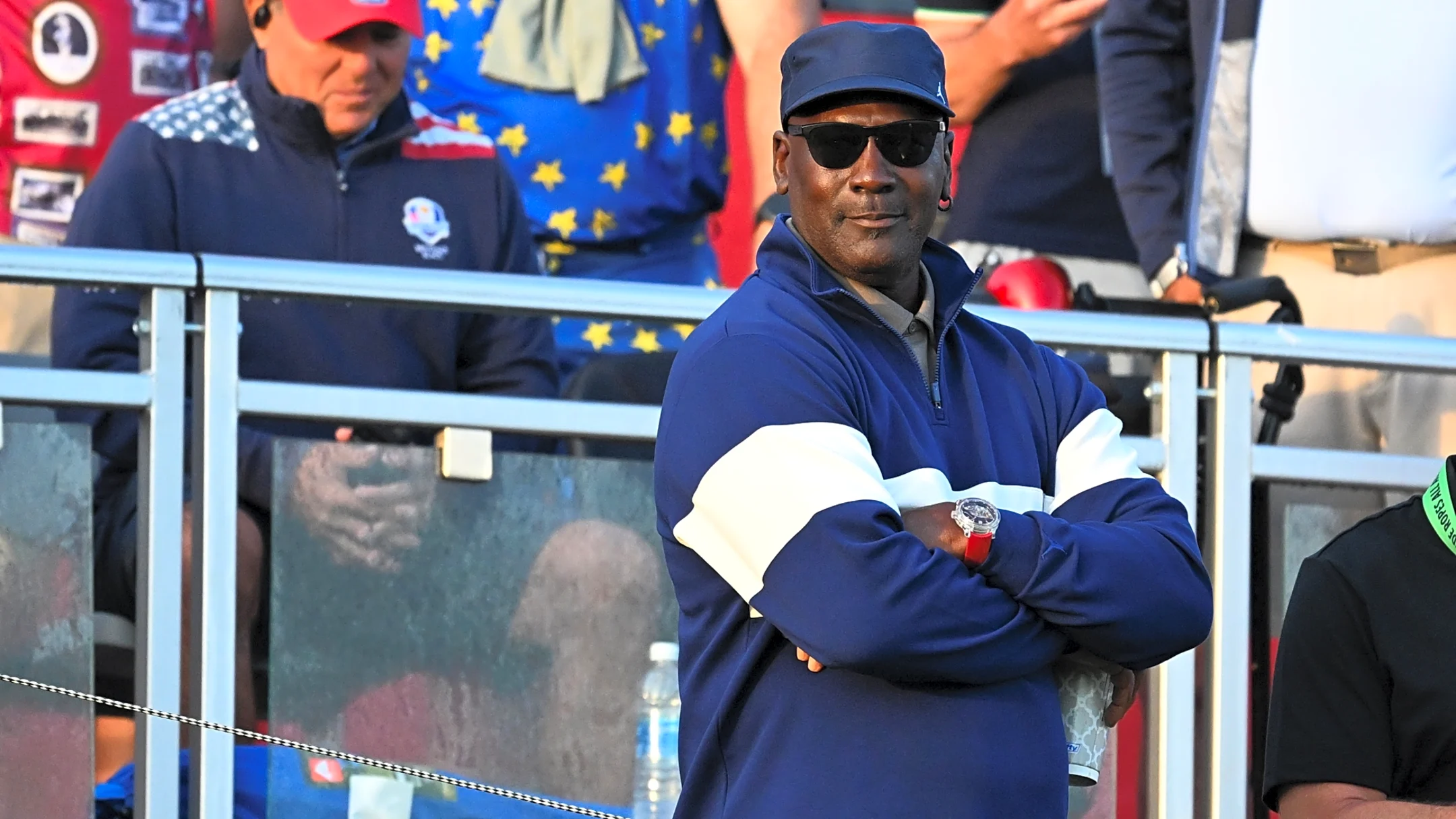Copyright fool

Tuesday, Oct. 28, 2025 at 12:30 p.m. ET CALL PARTICIPANTS Chairman, President, and Chief Executive Officer — Kevin S. Kim Senior Executive Vice President and Chief Financial Officer — Julianna Balicka Senior Executive Vice President and Chief Credit Officer — Peter Koh Need a quote from a Motley Fool analyst? Email [email protected] Net Income -- Net income totaled $31 million for 2025, up 28% year over year from $24 million in the same quarter last year. Excluding notable items, net income for the third quarter was $32 million, up 29% from $24.5 million a year ago. Net Interest Income -- Net interest income totaled $127 million for 2025, an increase of 8% from the prior quarter and up 21% from 2024, driven by loan growth, better earning asset yields, and lower deposit costs. Net Interest Margin -- Net interest margin increased 20 basis points quarter over quarter to 2.89%, marking the best sequential increase since 2012. The average margin for September 2025 was 2.96%. Loan Growth -- Gross loans totaled $14.6 billion as of Q3 2025, up 1.2% quarter over quarter, equivalent to 5% annualized, with increases across commercial and residential segments. Deposits -- Totaled $15.8 billion as of September 30, 2025, a 1% decline from June 30, 2025, due to a $139.5 million reduction in broker deposits, partially offset by higher customer deposits. Non-interest-bearing deposits rose 1% quarter over quarter to $3.5 billion as of September 30, 2025. Cost of Deposits -- Average total deposit and interest-bearing deposit costs each declined by eight basis points sequentially. Spot rates at period end were 2.82% for total deposits as of September 30, 2025, and 3.62% for interest-bearing deposits as of September 30, 2025. Credit Quality -- Criticized loans fell by $42 million or 10% sequentially to $373 million. C&I criticized loans decreased 17% quarter over quarter. Criticized loan ratio improved to 2.56% as of September 30, down from 2.87% as of June 30. Net Charge-Offs -- Totaled $5 million (14 basis points annualized) in Q3 2025, down 57% from $12 million (33 basis points annualized) in Q2 2025, mainly due to lower C&I loan charge-offs. Provision for Credit Losses -- $9 million in Q3 2025, with the previous quarter including $4.5 million in merger-related expenses. Allowance for Credit Losses -- $152.5 million as of September 30, coverage ratio of 1.05% versus $149.5 million and 1.04% as of June 30, both as of Q3 2025. Noninterest Income -- Sequential growth in service fees, international banking, foreign exchange, and wire transfer fees. $3 million gain on $48 million of SBA loan sales in Q3 2025, versus $4 million on $67 million in Q2 2025. Noninterest Expense -- $97 million, or $96 million excluding notable items in Q3 2025, compared with $92 million in the second quarter, attributed to higher compensation from ongoing hiring. Efficiency Ratio -- Efficiency ratio excluding notable items improved to 67.5% compared with 69.1% in 2025, reflecting revenue growth outpacing expense increases. CD Maturities -- $2.3 billion in CDs are maturing in the fourth quarter at an average rate of 4.08%. Purchase Accounting Accretion -- Accretion was $5 million this quarter, compared to $4 million last quarter, with all other purchase accounting impacts minimal. Dividend Announcement -- Board declared a $0.14 per share quarterly common dividend payable November 21, 2025. Full-Year 2025 Guidance -- High single-digit loan growth expected for 2025, approximately 10% net interest income growth expected for 2025, and approximately 30% noninterest income growth (excluding second quarter securities loss) expected for 2025. Noninterest expense (excluding notable items) projected to increase approximately 15% in 2025 due to acquisition costs and talent investments. Hires and Expansion -- Addition of a commercial banking team prompted acceleration of hiring plans. Expansion targeted at strategic sectors such as lower middle market, project finance, structured finance, and entertainment. Effective Tax Rate Outlook -- Expecting an effective tax rate of approximately 14% for Q4 2025, excluding notable items. Hope Bancorp (HOPE +0.19%) reported material sequential and annual improvements in net income and net interest margin in Q3 2025, supported by across-the-board loan growth and broad-based improvements in credit quality, including significant declines in criticized and charged-off loans. Noninterest income increased quarter over quarter in core business lines, but gains from SBA loan sales decreased compared to the prior quarter. The company advanced strategic initiatives, including completion of a major acquisition, ongoing portfolio repositioning, and investment in new banking talent. These actions contributed to higher noninterest expense and an upward revision of guidance for growth in several key operating metrics for 2025. Kim stated, "all our capital ratios increased quarter over quarter and remain well above the requirements for well-capitalized financial institutions," indicating regulatory capital flexibility for growth initiatives. Balicka said, "renewals of CDs at lower rates provide a tailwind for continued cost reductions," pointing to potential margin improvement drivers ahead. Deposit mix composition shifted, with management reporting that broker deposits now represent approximately 5% of total deposits as of Q3 2025, down from prior periods, enhancing funding stability. Territorial Bancorp integration is ongoing, with incremental cost savings recognized but management reported "nothing headline-grabbing" according to Julianna Balicka for the quarter. Kim noted the SBA pipeline remains robust despite the government shutdown temporarily halting new loan applications, with existing approvals unaffected. The commercial banking pipeline entering Q4 2025 is described as "pretty comparable to what we had at the beginning of the third quarter," according to Kevin Kim, with CRE activity stable except for normal year-end seasonality. The current loan-to-deposit ratio remains in the low 90% range as of Q3 2025, providing operating flexibility in a shifting rate environment, as described by Balicka. INDUSTRY GLOSSARY C&I Loans: Commercial and Industrial loans issued to businesses for general purposes such as working capital or equipment purchases. Criticized Loans: Loans classified by regulators as having potential weaknesses that may result in loss if not corrected. Special Mention Loans: Loans exhibiting potential weaknesses, requiring management's close attention but not yet classified as substandard. CDs: Certificates of Deposit, time-bound deposit accounts with fixed interest rates. Accretion: The periodic recognition of a discount or premium on purchased loans as interest income over time. SBA Loans: Small Business Administration-guaranteed loans supporting small business lending and operations. Full Conference Call Transcript Kevin Kim: Thank you, Maxime. Good morning, everyone, and thank you for joining us today. Let us begin on Slide three with a brief overview of the quarter. The 2025 was a very positive one for Hope Bancorp, marked by continued progress across our strategic priorities to improve profitability, and reflecting solid execution across the organization. Improvement in asset quality was a key highlight, as was loan growth across all our major loan segments. Throughout the year, we have been making sustained investments in talent to support our growth, and I'm very pleased with the progress we have made so far. Before we dive into this quarter's results, I want to extend my deepest gratitude to all the bankers at Hope Bancorp for their unwavering dedication and commitment to excellence. Their hard work is the driving force behind our success, and I'm incredibly proud of what we are building together. And now on to a discussion of our results. Net income for 2025 totaled $31 million, up 28% year over year from $24 million in the year-ago quarter and up from a net loss of $28 million in the second quarter. Second quarter results were impacted by elevated notable items related to a securities portfolio repositioning, the close of the Territorial Bancorp acquisition on April 2, and impact from a California state tax law change. Excluding notable items, third quarter 2025 net income of $32 million was up 29% from net income of $24.5 million in 2025. In the third quarter, we saw loan growth across all our major loan portfolio segments of C&I, commercial real estate, and residential mortgage. Our net interest margin expanded 20 basis points, which was our best linked quarter expansion since 2012. And importantly, our asset quality improved, led by our disciplined approach to credit management, which resulted in a 57% reduction in net charge-offs and noticeable improvement in classified and special mention loans, including a 17% reduction in C&I criticized loans. Moving on to slide four, all our capital ratios increased quarter over quarter and remain well above the requirements for well-capitalized financial institutions, providing us with a healthy cushion to support growth and navigate an evolving macroeconomic environment. Our Board of Directors declared a quarterly common stock dividend of $0.14 per share payable on November 21, to stockholders of record as of November 7, 2025. Continuing to Slide five, we continue to be focused on strengthening our deposit franchise, deepening primary banking relationships with our customers, and lowering deposit costs through ongoing optimization of our deposit mix and disciplined pricing. As of 09/30/2025, deposits totaled $15.8 billion, reflecting a 1% decrease from $15.9 billion as of June 30, primarily driven by a $139.5 million reduction in broker deposits partially offset by growth in customer deposits. Non-interest-bearing deposits totaled $3.5 billion at September 30, up 1% quarter over quarter. Moving on to slide six, at 09/30/2025, gross loans including held for sale totaled $14.6 billion, up 1.2% quarter over quarter, equivalent to 5% annualized with growth across all our major loan segments. Year-over-year production has been strengthening while maintaining disciplined underwriting and pricing standards. Loan growth this quarter also benefited from lower levels of payoffs and paydowns. Across the organization, we have been investing in talent to drive sustainable, prudent growth and enhance our corporate and commercial banking capabilities. As a bank, we are focused on driving business development and deepening client relationships to expand market presence. With that, I will ask Julianna to provide additional details on our financial performance for the third quarter. Julianna? Julianna Balicka: Thank you, Kevin. Good morning, everyone. Beginning on Slide seven, our net interest income totaled $127 million for 2025, an increase of 8% from the prior quarter and up 21% from 2024. This reflects loan growth, improved yields on earning assets, and lower cost of interest-bearing deposits. Overall, net interest margin increased 20 basis points quarter over quarter to 2.89% for 2025, up from 2.69% from the prior quarter. Nine basis points of the linked quarter expansion came from higher earning asset yields, six basis points came from lower funding costs, and five basis points came from a favorable shift in balance sheet mix. On Slide eight, we present the quarterly trends in our average loan and deposit balances and our weighted average yields and costs. The cost of average interest-bearing deposits and the cost of average total deposits for the third quarter each declined by eight basis points from the previous quarter. The acquisition of Territorial has enhanced our deposit position, and renewals of CDs at lower rates provide a tailwind for continued cost reductions. With the September Fed funds target rate cut of 25 basis points, we realized an approximate 85% spot beta in reducing money market deposit rates. On to Slide nine, where we summarize our noninterest income. I will highlight quarter over quarter growth in service fees on deposit accounts, international banking fees, foreign exchange, and wire transfer fees. During the third quarter, we sold $48 million of SBA loans compared with $67 million in the second quarter. Accordingly, we recognized gains on sale of $3 million for the third quarter compared with $4 million for the second quarter. Moving on to noninterest expense on slide 10. Our noninterest expense totaled $97 million in the third quarter. Excluding notable items such as merger-related costs, noninterest expense was $96 million in the third quarter, compared with $92 million in the second quarter. This quarter over quarter increase was mainly driven by higher compensation-related costs reflecting the company's sustained investment in talent to support growth. Importantly, revenue growth outpaced expense growth in the third quarter, generating positive operating leverage. For 2025, our efficiency ratio excluding notable items improved to 67.5% compared with 69.1% for 2025. Next, on to slide 11. I will review our asset quality, the improvement of which was a highlight this quarter. Criticized loans declined $42 million or 10% quarter over quarter to $373 million at September 30, with decreases in both special mention and classified loans, including a 17% linked quarter decrease in C&I criticized loans. The criticized loan ratio improved to 2.56% of total loans at September 30, down from 2.87% at June 30. Net charge-offs totaled $5 million for the third quarter or annualized 14 basis points of average loans, down 57% from $12 million or 33 basis points annualized in the second quarter. The quarter over quarter drop in net charge-offs reflected lower charge-offs in C&I loans. The third quarter 2025 provision for credit losses was $9 million. This compares favorably with the provision for credit losses of $15 million for 2025, which included $4.5 million of merger-related provision expenses that the company considered a notable item. Excluding notable items, the quarter over quarter decrease in the provision for credit losses largely reflected lower net charge-offs. Finally, allowance for credit losses totaled $152.5 million at September 30, compared with $149.5 million at June 30. The allowance coverage ratio was 1.05% of loans receivable at September 30, compared with 1.04% at June 30. With that, let me turn the call back to Kevin. Kevin Kim: Thank you, Julianna. Moving on to the outlook on slide 12. Our outlook for the full year 2025 is updated as follows. We remain on track to achieve high single-digit loan growth in 2025, continuing to build on the growth momentum from the third quarter. We expect net interest income growth of approximately 10% for 2025. For 2025, we expect noninterest income growth of approximately 30% excluding the second quarter loss on the securities repositioning, reflecting the year-to-date momentum across various fee business lines. We expect noninterest expenses excluding notable items to be up approximately 15% in 2025, reflecting the addition of Territorial's operations to our run rate and our investment in talent to enhance our production capabilities. Throughout the year, we have been adding experienced bankers to our corporate and commercial banking teams. In particular, in the third quarter, we hired a seasoned commercial banking team, which accelerated some of our hiring plans. A leading institution recently exited one of our core markets, and we had the opportunity to bring this group of professionals to Hope Bancorp to support our continued expansion. Our hiring is driving improved revenue growth, and we expect to see sequential positive operating leverage in the fourth quarter with an improvement to our efficiency ratio. Lastly, we anticipate the fourth quarter 2025 effective tax rate to be approximately 14% excluding the impact of notable items. With the improvement of our financial performance and strengthening of our balance sheet in the third quarter, along with the strategic additions to our banking teams, we believe we are well positioned to drive profitable growth and create long-term value for our stockholders. With that, operator, please open up the call for questions. Operator: We will now begin the question and answer session. Our first question comes from Matthew Clark with Piper Sandler. Please go ahead. Matthew Clark: Yes. Good morning, everyone. Just on the margin, do you have the spot rate on deposits? Didn't see it in the deck. At the end of September. And maybe the average margin in the month of September? Julianna Balicka: One second. On the spot rates of deposits at the end of September, it was 2.82% for total deposits and 3.62% for interest-bearing deposits. And the average of deposits you see in our earnings tables, the new table. Matthew Clark: No. The average margin for the month of September? Julianna Balicka: Oh, the average margin for the month of September. One second. The margin for the month of September was 2.96%. Matthew Clark: Okay. Great. And then just on Territorial, any update there on how things are progressing? You know, cost saves you may have extracted so far from that deal? Julianna Balicka: We are continuing to focus on stabilizing and expanding operations there. As we mentioned last quarter, following the acquisition, there's been, you know, some homework in terms of staffing up branches and just making sure that our products are rolled out to that platform. So we're continuing to incrementally see cost savings as we kind of align the operations there. But nothing headline-grabbing to report this quarter. Matthew Clark: Thank you. Our next question comes from Gary Tenner with D.A. Davidson. Please go ahead. Gary Tenner: I wanted to ask, Julianna, if you could give us the purchase accounting impact this quarter. I think last quarter may have been in the deck, but I didn't see it. So the loan discount accretion and then kind of the net purchase accounting benefit as well? Julianna Balicka: So, yeah, last quarter was the acquisition quarter. We had the accretion number last quarter. So last quarter, the accretion was $4 million. And this quarter, the accretion was $5 million. Gary Tenner: It was I'm sorry. How much? $5 million was the loan accretion or the net benefit? Julianna Balicka: Overall? All other items were minimal. Gary Tenner: Okay. Julianna Balicka: If you look in the table from last quarter, I mean, pretty much it was de minimis on each of those line items. Gary Tenner: Yeah. They pretty much canceled out, I think, last quarter. Okay. And then in terms of the CD maturities in the fourth quarter, could you give us the amount of maturing CDs and the rate that they're rolling off at? Julianna Balicka: One second. Let me grab that. CDs that are maturing in the fourth quarter. We've got $2.3 billion of maturity. And average of 4.08%. Gary Tenner: Okay. I'm sorry. You were fading out $2.3 billion, you said? Julianna Balicka: Yes. At a rate of 4.08%. Gary Tenner: Okay. All right. Thank you. Operator: Just a reminder, please limit yourself to two questions. Our next question comes from Kelly Motta with KBW. Please go ahead. Kelly Motta: Hey, good morning. Thanks for the question. I would like to circle back to the expense side of things. You guys mentioned in your prepared remarks that you've made a number of frontline hires that increased the expense run rate. Can you remind us kind of where you are in the process? It seems like some of the better revenue growth is helping to offset some of these investments you're making. So what two-part question where are you adding, and where do you stand in this process? Thank you. Kevin Kim: Well, Kelly, you know, we have been adding new team members throughout the year. And the additions will strengthen our presence in strategic segments like lower middle markets, project finance, structured finance, entertainment, etcetera. As well as treasury management, spread products, and so on. Our focus remains on strengthening existing capabilities. And we are somewhat optimistic about the growth prospects with the addition of all these new people. Julianna Balicka: Got it. That's what that's I would say if you think about it, in the beginning, you hire leadership and, you know, more senior positions, then you kind of fill in more mid-level after that. So we filled in all the key leadership positions, and we've made a number of senior RM hires in the team that we referenced. But, I mean, in the fourth quarter, we have more hiring plans and in 2026, obviously, because we're in a great position to be in to expand our organic presence and growth. Kelly Motta: Got it. That's helpful. That was a two-parter. So I will I'll step back. Thank you. Operator: Our next question comes from Tim Coffey with Janney. Please go ahead. Timothy Coffey: Thanks, morning everybody. Question, with the government shutdown, does that make it hard to predict revenues from the SBA loan on sale business line? Kevin Kim: Yeah. Well, first of all, outside of SBA, we do not really foresee any material impact from the recent government shutdown. As to the SBA, you know, as you may know, the US Small Business has suspended acceptance of new SBA loan applications and additionally, the secondary market for new SBA 7(a) loan sales has been halted. But from our side internally, there is no impact to the loans that have already received an SBA approval number. So in the meantime, the government shutdown continues, we will continue to proceed business as usual. The new application so that these loans are fully prepared for submission to the US SBA once operations resume. So hopefully, hopefully, the government shutdown ends in a new future. But no matter what happens, I think we are in a good position in terms of our noninterest income in the fourth quarter and throughout 2025. Timothy Coffey: Okay. That's excellent color. And then the other question I had was on the nonaccrual loans. You know, commercial real estate, I think, is about half of them right now. And in relation to the totality of the portfolio, it's a relatively small percentage. But they are up quarter or year to date on there. Can you kind of describe some of the challenges some of those loans are experiencing? Peter Koh: Yeah. This is Peter. You know, I think our NPLs have been relatively flat this quarter. Some of the CRE loans and actually for all the loans in that category, sometimes it just takes time to work out. And we feel good. I think there's a level of, you know, problem credits there that we are honed in on. And I think it's just a matter of time before we're able to come to resolutions there. Timothy Coffey: Okay. Great. Thank you, Peter. Those are my two questions. Thank you. Operator: Our next question comes from Kelly Motta with KBW. Please go ahead. Kelly Motta: Hey, thanks for letting me step in. I just wanted to ask a bit broader about kind of the loan growth ahead. I think you mentioned that growth this quarter was positively benefited by lower payoffs and paydowns. Just given the potential for rates to decrease here, wondering how you guys are thinking through that impact and your ability to offset that with the pipeline ahead. Thank you. Both next quarter and beyond if possible. Kevin Kim: Yeah. I'd I'd As to our current pipeline, we have a strong pipeline going into the fourth quarter. And we expect our strong pipeline will support our loan growth outlook for the rest of the year. And our fourth quarter loan pipeline is pretty comparable to what we had at the beginning of the third quarter. And we continue to see improvement in our C&I driven by recent frontline additions as you said. And our CRE pipeline remains pretty stable. Although we in the past, we typically experienced some seasonal slowdown toward the year-end. We expect that our loan growth guideline for the entire 2025 will be a good number for us to share. Kelly Motta: Got it. Thank you. And I appreciate the color around both the deposit spot rates as well as the spot rate beta on the money market where it seems like you're being successful there. Just wondering in terms of the competitive environment for deposits, seems like you're having success on the money market. Can you remind us where new CDs are coming on and you know, the beta was relatively high on the way up. How you guys are thinking about you know, balancing beta with you know, the outlook for a need for funding ahead. Thank you. Julianna Balicka: Yeah. So we reduced our CD pricing with the last Fed funds cut. Right? And you know, new CDs most recently have been coming on closer to 4% for the exceptions and below 4% for the non-exceptions. And so we're kind of continuing to think of deposit pricing as moving with Fed funds market pricing and, you know, with additional territorial, we have been in a good position to where we can afford to be more price sensitive, if you will. And the beta was high on the way up because the balance sheet dynamics were different at that point in time. And I'll remind you know, the analyst community that on the way down, right now, our loan to ratio is in the low 90%, which is a much different starting point. And I'll also remind the analyst community that you know, on the way up, we had a much higher percentage of broker deposits in our deposit mix and today, we're, you know, you know, sub 5%, around 5% kind of numbers that we shared with you previously. So we're in a much different position today than we were on the way up. So I am optimistic about our ability to have good deposit costs results. Kelly Motta: Got it. Thanks for letting me step in. Thanks. Operator: Thank you, Kelly. This concludes our question and answer session. I would like to turn the conference back over to management for any closing remarks. Kevin Kim: Thank you. Once again, thank you all for joining us today, and we look forward to speaking with you again in three months. So long, everyone. Operator: The conference is now concluded. Thank you for attending today's presentation. You may now disconnect.



